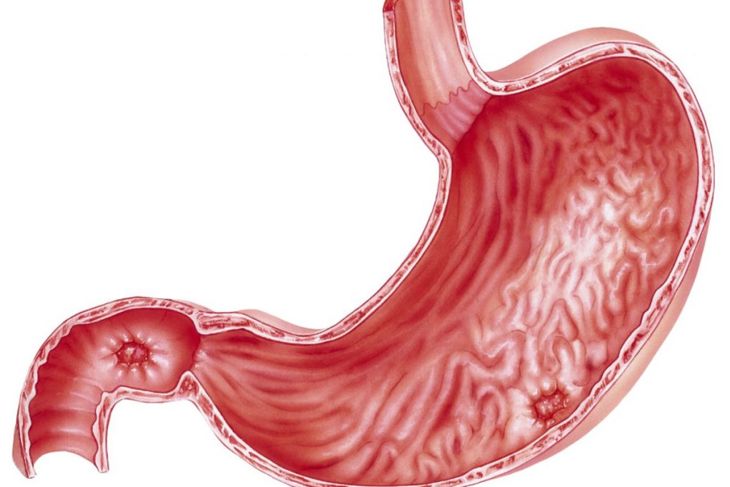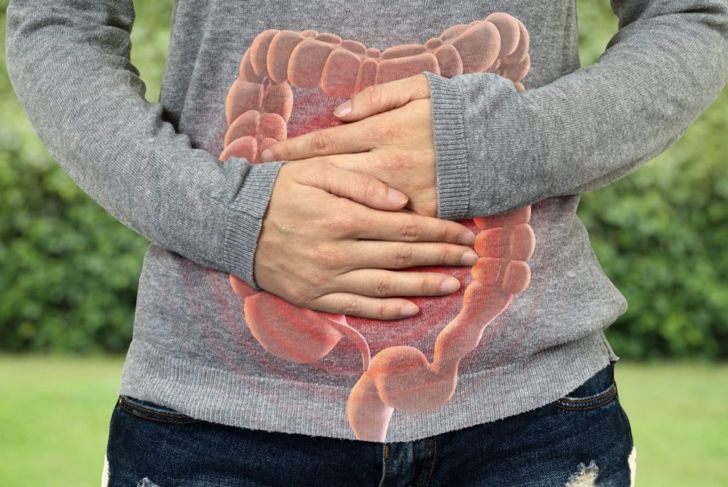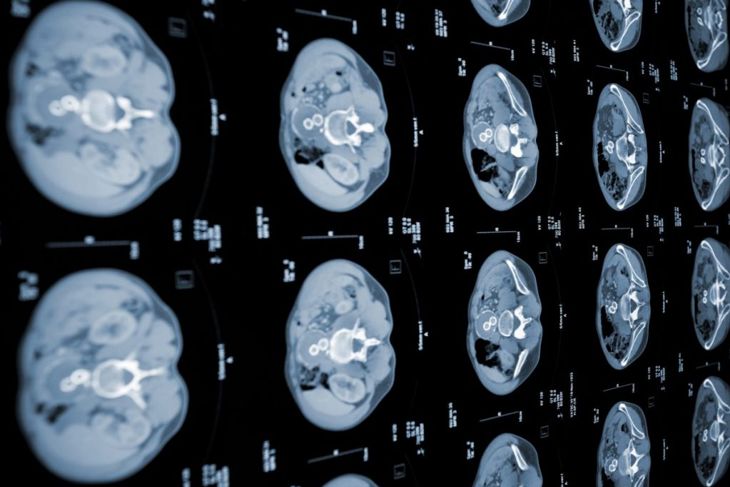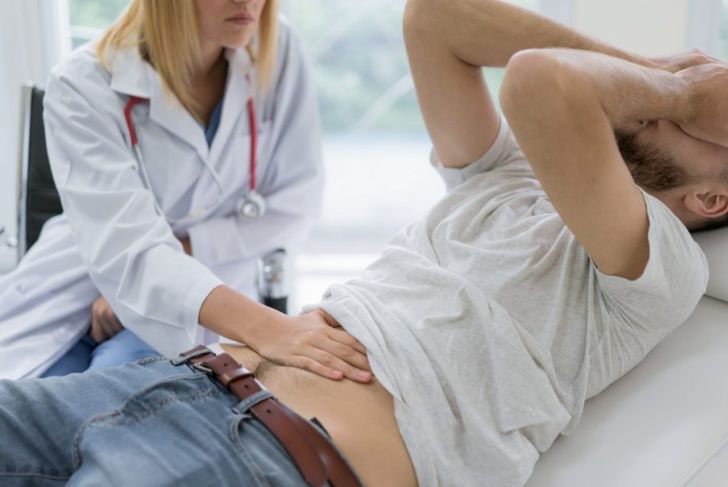A peptic ulcer is a defect in the wall of the stomach or small intestine. Peptic ulcers are most often caused by infection or excessive use of anti-inflammatory drugs and are generally treatable with antibiotics and antacids. Rarely, surgery is necessary to address complications, though hospitalization and operative management has declined in recent years due to other methods of care. The signs and symptoms of ulcers are well understood, though they may be difficult to distinguish from other gastrointestinal conditions.
Ulcer Types
Peptic ulcers are divided into two main types: gastric and duodenal. Most symptoms are shared between the two, though some type-specific markers of each exist. Gastric ulcers form in the lining of the stomach. Duodenal ulcers form in the duodenum, the uppermost section of the small intestine.
Abdominal Pain
Abdominal pain is the hallmark symptom of an ulcer. Most people describe a burning or ache that may extend to the neck and back and can last from several minutes to several hours. To differentiate between the potential ulcer location, absence or presence of pain during or after a meal can be helpful: gastric ulcer pain worsens with food, whereas duodenal ulcer pain improves with food.
Nausea and Vomiting
In some cases, the ulcers become inflamed, swell, and eventually scar. When this occurs near the passage connecting the stomach to the duodenum, the pylorus, the swelling may obstruct the emptying of digested food into the small intestine. This interruption in the digestion process can lead to gastrointestinal upset, resulting in nausea or vomiting.
Bloating
Ulcerative obstruction of the gastrointestinal tract might also lead to stomach bloating. When food cannot sufficiently empty into the bowels, the individual may experience bloating, which causes a feeling of abdominal fullness and an extended belly. This occurs primarily when the person eats, even if they only consume a small amount of food.
Appetite Loss
Abdominal pain, nausea, bloating, and other gastrointestinal upset due to swelling of a stomach or duodenal ulcer often affects appetite. Someone experiencing these uncomfortable symptoms may feel too unwell to eat, or they may avoid eating to prevent the symptoms. Certain foods, too, may aggravate ulcers, contributing to loss of appetite.
Weight Loss or Gain
Ulcers can lead to unintentional weight loss, due to symptoms like appetite loss, nausea, and vomiting. Alternatively, a person with a stomach or duodenal ulcer may gain weight. The abdominal pain experienced with an ulcer is caused by the stomach acid irritating the sore; eating typically relieves this irritation by acting as a buffer between the acid and the lining of the stomach, especially with duodenal ulcers. In spite of other gastrointestinal symptoms, a person may eat more to achieve this relief.
Vomiting Blood
Gastrointestinal bleeding is a common complication of ulcers. The bleeds often resolve on their own, though if persistent, they can lead to vomiting blood or hematemesis. The result may be hemorrhaging (bleeding) of the stomach lining. Vomit may contain bright red blood or, more often, reddish-brown clumps of partially digested blood. This can occur even without pain.
Abnormal Stools
Hemorrhaging of the ulcer might also lead to the passing of abnormal stool. Feces may contain bright red blood (hematochezia) or be black and tarry (melena). Persistent bleeding of the ulcer and blood loss in the stool can lead to low blood pressure or anemia, which presents with weakness and fatigue.
Ulcer Complications: Penetration
The penetration of surrounding organs is a rare but critical complication of an ulcer. The sore spreads through the wall of the stomach or duodenum and into a nearby organ, most often the pancreas, liver, bile ducts, or colon. Symptoms of penetration include piercing pain that radiates to other parts of the body and failure of eating or medications to provide pain relief.
Symptoms of Stomach Perforation
Another rare and potentially life-threatening complication of an ulcer is the perforation of the wall of the stomach or duodenum. This creates an opening between the stomach and the abdominal cavity and carries with it a high risk of infection. A perforation presents in sudden and intense abdominal pain and tenderness. The most common symptom of infection is a fever.

 Home
Home Health
Health Diet & Nutrition
Diet & Nutrition Living Well
Living Well More
More




















